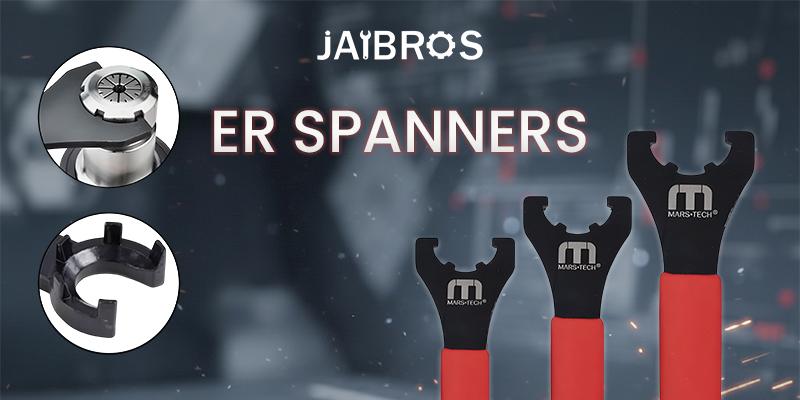How a C-Type Spanner Wrench Ensures Better Grip & Control

How Does a C-Type Spanner Wrench Provide Better Grip on Circular Nuts?
When it comes to maintenance and repairs, the right tool at the right moment can turn a difficult and inconvenient situation into a smooth and easy repair, or the opposite, into a frustrating slip. One of the tools used by mechanics to help with repair work that often gets forgotten is the C-type spanner wrench. Unlike a common wrench, a C-type spanner wrench can tighten or loosen a circular-nut fastener, slotted locknut, or round-like fastener, i.e., if you cannot get a grip on the fastener.
In an industrial workshop where precision and safety coexist, a wrench is a vital component of every technician's tool bag. It allows the technician to hold the fastener—in most cases—without scratching or marking the critical surface of the part, making it an important tool in any engineer's, mechanic's, or maintenance technician's tool kit.
Why Regular Wrenches Fail with Circular Nuts
Most workshops use several types of spanner, such as ring spanners, open-end spanners, box spanners, and adjustable spanners. While these are useful for hexagonal or square nuts, they often fail when it comes to handling round or slotted nuts. The reason is simple—they cannot hold the nut securely due to the absence of flat edges.
This is where the C-type spanner proves its worth. With a hook-shaped end that fits perfectly into the groove of a circular nut, it allows the user to apply pressure evenly. This design eliminates slipping, prevents surface damage, and makes loosening or tightening round nuts much easier.
Design That Defines Precision and Grip
The C-type spanner wrench is designed in a half-moon or hook shape, making it suitable for engaging slotted nuts found in bearings, gears, or other machinery. The hook or pin on its end ensures that it catches the slot of the nut securely. This innovative design distributes pressure evenly, preventing the wrench from slipping off while applying torque.
Workshops handling machines, hydraulic systems, and motors rely on this tool because of its dependable performance. In situations where other types of spanners struggle, the C-type wrench gives the operator both control and confidence.
How the C-Type Spanner Wrench Offers a Better Grip
Let’s look at how this tool ensures perfect grip and control over circular nuts:
1. Hook Design for Slot Engagement
The hook or pin end fits directly into the slot of the nut, ensuring a snug grip. This feature prevents slippage even when applying high torque.
2. Ideal for Smooth and Rounded Surfaces
Standard spanners need flat sides to work effectively. But for smooth, round nuts, only a wrench can provide a consistent hold without damaging the surface.
3. Reduces Damage and Wear
The design allows precise control, which reduces wear on both the nut and tool, extending their lifespan.
4. Versatile Use in Maintenance Tasks
Whether you’re adjusting bearings, locking nuts, or hydraulic fittings, this wrench ensures fast, secure, and safe handling—saving time and effort.
C-Type Spanner Wrench vs. ER Spanner Wrench
While both tools serve tightening functions, they are used for different purposes. The ER spanner wrench is mainly used for CNC machine collet nuts, ensuring that collets are securely tightened. On the other hand, the C-type spanner wrench is ideal for round locknuts and bearing applications.
Both the ER spanner and ER spanner wrench provide strong grip and precision, but their structural design differs. The ER versions are used for tool-holding systems, while the C-type is better suited for mechanical and maintenance work. Having both ensures full coverage for workshop operations.
Common Applications of a C Type Spanner Wrench
The c type spanner wrench is used in a variety of workshop and maintenance settings:
-
CNC Machine Maintenance: Adjusting circular locknuts and machine bearings
-
Pump and Motor Servicing: Tightening or removing bearing housings
-
Hydraulic Systems: Securing round fittings and connections
-
Automotive Repair: Working on wheel hubs and circular nuts
-
Industrial Assembly Lines: Precision tightening without damaging parts
Professionals across different industries trust this tool because it performs efficiently even in tight or hard-to-reach spaces.
Tips for Choosing the Right C-Type Spanner Wrench
-
Check the nut diameter to ensure compatibility.
-
Choose adjustable types for versatility.
-
Opt for high-quality material such as chrome-vanadium steel for durability.
-
Keep both C-type and ER tools in your toolkit to handle various maintenance tasks.
FAQs About C-Type Spanner Wrenches
1. What is a C-type spanner wrench used for?
It’s designed for tightening or loosening round or slotted nuts found in bearings, machines, and motors.
2. How is it different from other spanners?
Unlike traditional wrenches, it grips round surfaces using a hook or pin, preventing slips and scratches.
3. Can it be used for CNC machines?
Yes, especially for bearing nuts and circular fittings. For collet nuts, an er spanner wrench is used.
4. Is it available in adjustable sizes?
Yes, many models are adjustable to fit different nut diameters, offering flexibility for various tasks.
5. Why should workshops have it?
It improves grip, ensures accuracy, prevents nut damage, and saves time during maintenance work.
Conclusion:
A C-type spanner wrench is not just another mechanical tool—it’s a symbol of precision, control, and efficiency in every maintenance task. From securing circular nuts to tightening locknuts without damage, it ensures both safety and accuracy.
If you’re looking for high-quality workshop tools, Jaibros offers a wide range of reliable and durable options, including C-type and er spanner wrenches. Their tools are built for professionals who value performance and precision. Choose Jaibros for long-lasting, high-performance solutions for your industrial and CNC machining needs.



